This healthy mango pineapple smoothie tastes like a sweet & creamy tropical treat but packs a punch with protein, fiber and whole fruit. Just 5 minutes and a handful of ingredients (fresh or frozen) are all you need to make this for a quick & easy breakfast or satisfying snack!
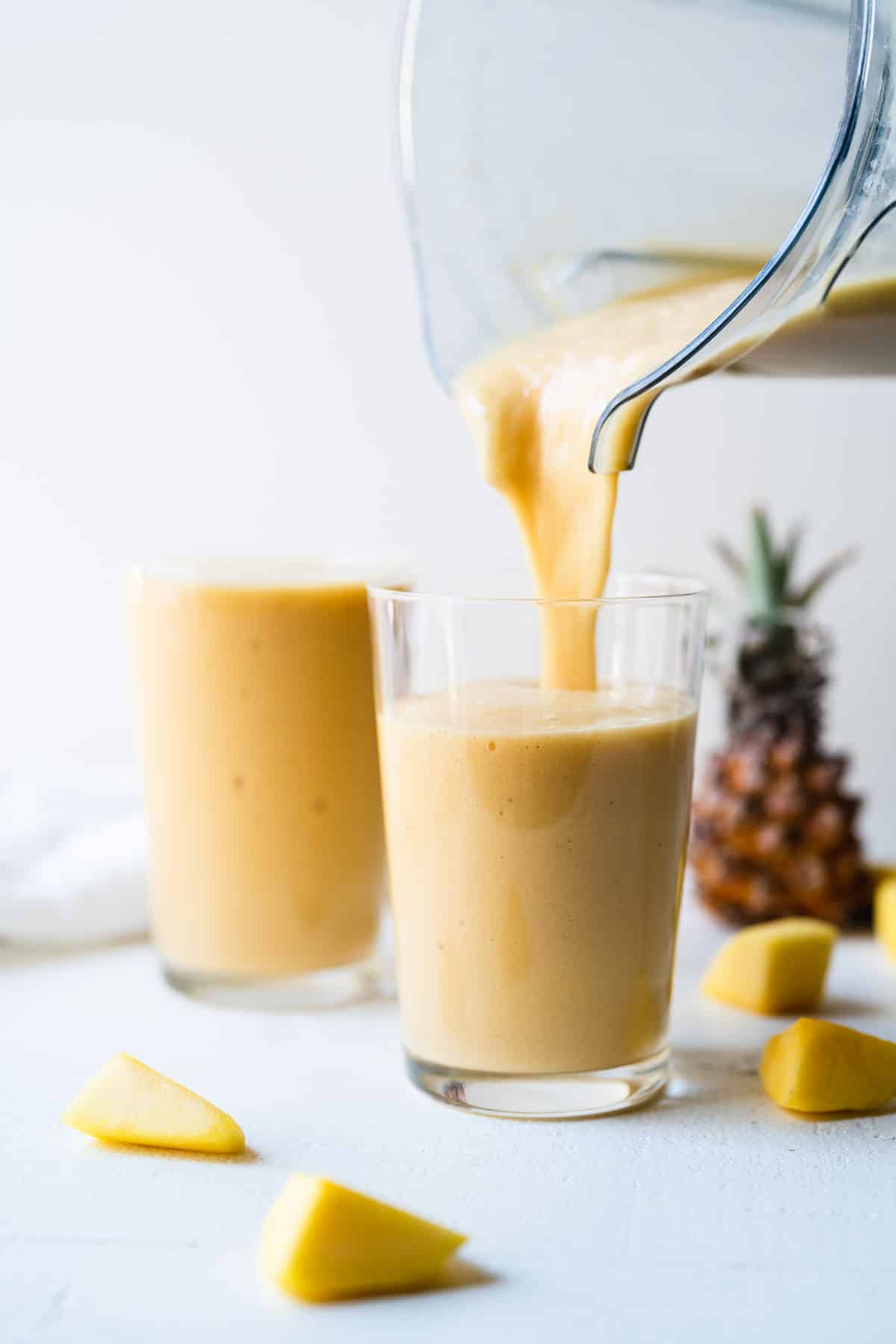
Jump to:
🥭 Reasons to love this recipe
Around here, we’re BIG fans of refreshing, fruity smoothies with a tropical twist (like this mango spinach smoothie and this pineapple banana smoothie).
So it was a no-brainer to combine the best of those mango and pineapple flavors into one easy healthy smoothie recipe.
If you’re a fan of the McDonald's mango pineapple smoothie then I think you’ll LOVE this healthy homemade version - it’s one that we find ourselves making on repeat week after week.
While the drive-thru version uses fruit & fruit juice concentrates, this recipe can easily be made at home with whole fruit and customized however you like (like adding a boost of protein, blending in some greens, or even turning it into a fun smoothie bowl).
Bonus points that it also has no added sugar or thickeners, and just leans on easy to find fresh or frozen ingredients (plus it’s naturally dairy free and vegan so everyone can enjoy it!).
This recipe is super versatile, so you can swap in almost any other fruit to make endless variations! I added lots of ideas for you below to get you inspired (including how to make it with spinach, kale, strawberry, blueberry, peach, orange, coconut, ginger, Greek yogurt or even a version with no banana).
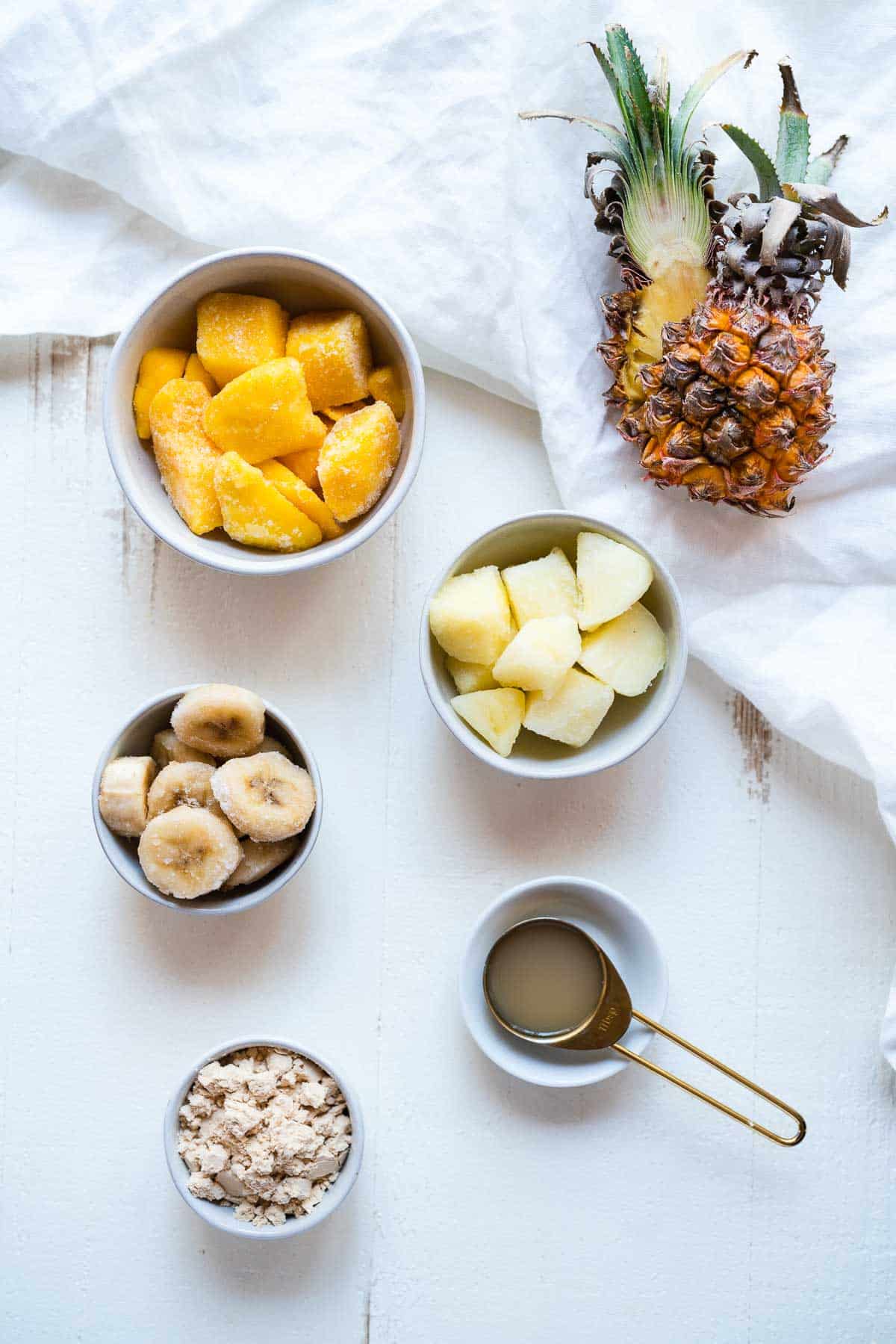
🍍 Ingredients you’ll need to make it
Mango: You can use fresh or frozen mango chunks for this protein smoothie recipe. I like using frozen for the convenience (no peeling or chopping required), ability to find it year-round, and because of how thick and creamy it makes it.
Banana: I love the natural sweetness and the thick & cream texture that frozen bananas add to smoothies, but you can also use a fresh banana instead.
Pineapple: The pineapple is the star ingredient in this smoothie, and you can use either fresh or frozen pineapple. Fresh will be juicier but may take longer to cut & prep. Frozen will help create a thicker texture, may be easier to find year round and requires less prep time.
Water: I used water for this hydrating smoothie because it helps the tropical flavors really shine and delivers the most vibrant green color. But you could also use milk to make it creamier, coconut water for more electrolytes, or tropical fruit juice to make it sweeter (like pineapple juice, passionfruit juice, orange juice or a blend of fruit juices).
Lemon juice: If you ever feel like your smoothies are a little bland or one-note try adding some citrus juice. Bottled lemon juice is super convenient to have on hand to make smoothies but you could also use fresh squeezed lemon juice. Lime juice and pineapple juice also work great.
Vanilla protein powder: I like adding plant-based protein powder to my smoothies, it makes them thicker, creamier and gives them extra staying power than an all-fruit smoothie. You can use any type of vanilla protein powder, just be sure to use one you like the taste of. You can also use Greek yogurt in its place for a whole food source of protein.
Honey: This ingredient is purely optional but can be nice and balancing if your pineapple happens to be more tart than sweet or you’re using an unsweetened protein powder. You can also use maple syrup or agave in its place.
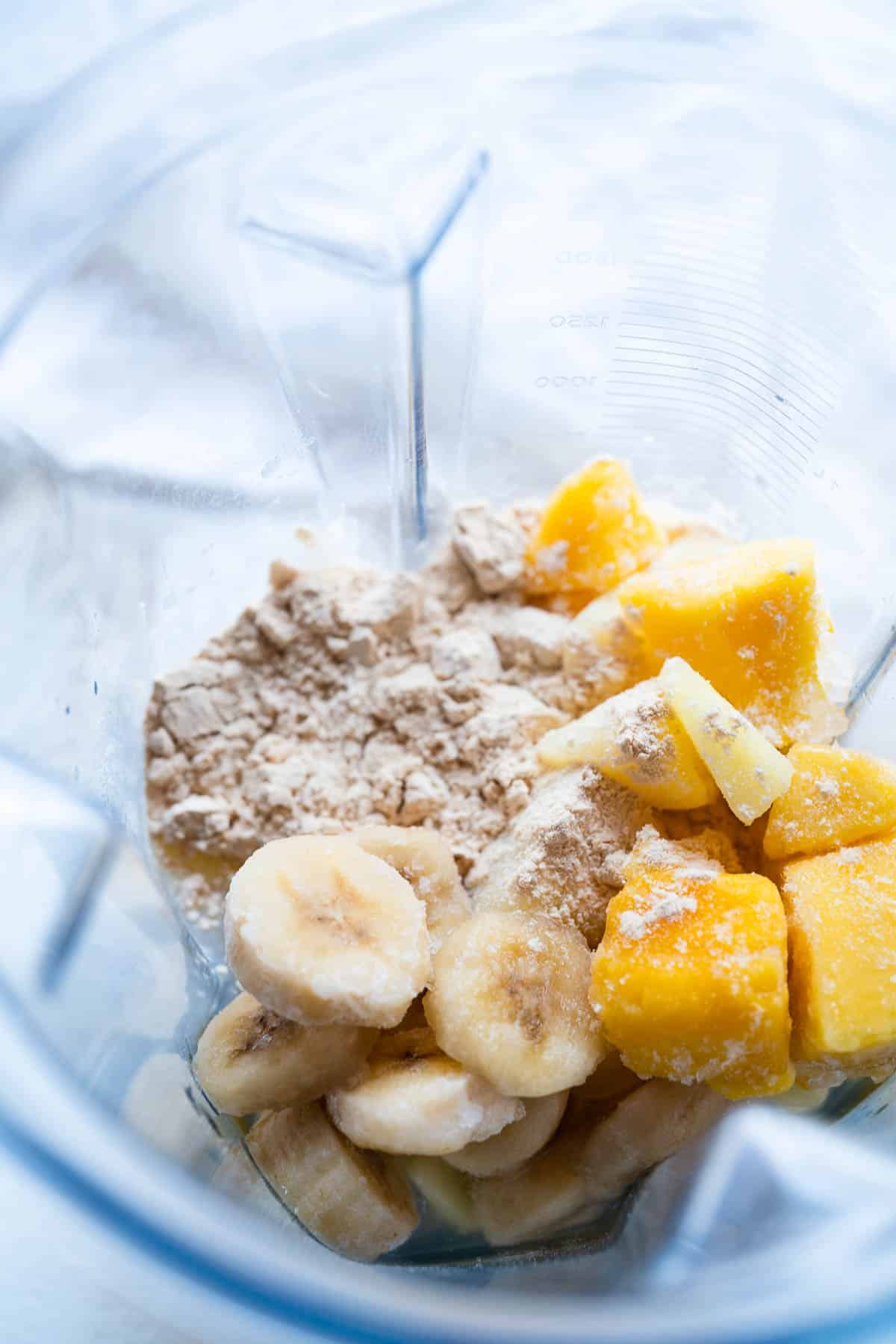
💭 Top tips
Whenever possible, use frozen fruit instead of ice: Frozen ingredients make your smoothies thick and satisfying without watering down the flavors the way ice can. Bonus points that if the smoothie warms up, it’ll still maintain the same great taste and thick, creamy texture.
If using fresh fruit, you can add ice for a thicker texture.
Ways to adjust sweetness: In testing this recipe, I didn’t find it needed added sweetener. But free to adjust to taste by blending in a bit of honey, maple syrup, pitted dates or liquid stevia drops (especially if your fruit isn't as ripe or sweet).
For a vegan smoothie: This smoothie is already naturally dairy free and gluten free, but be sure to use a plant based protein powder and maple syrup (if using sweetener) for a vegan version.
For a paleo smoothie: This smoothie is naturally dairy free and grain free, but be sure to use a paleo friendly protein powder for a paleo compliant version.
If you want to use canned pineapple, look for an unsweetened kind. If already-sweetened then you may want to skip adding the honey so the flavors are all still balanced and add ice if you want it to be thicker.
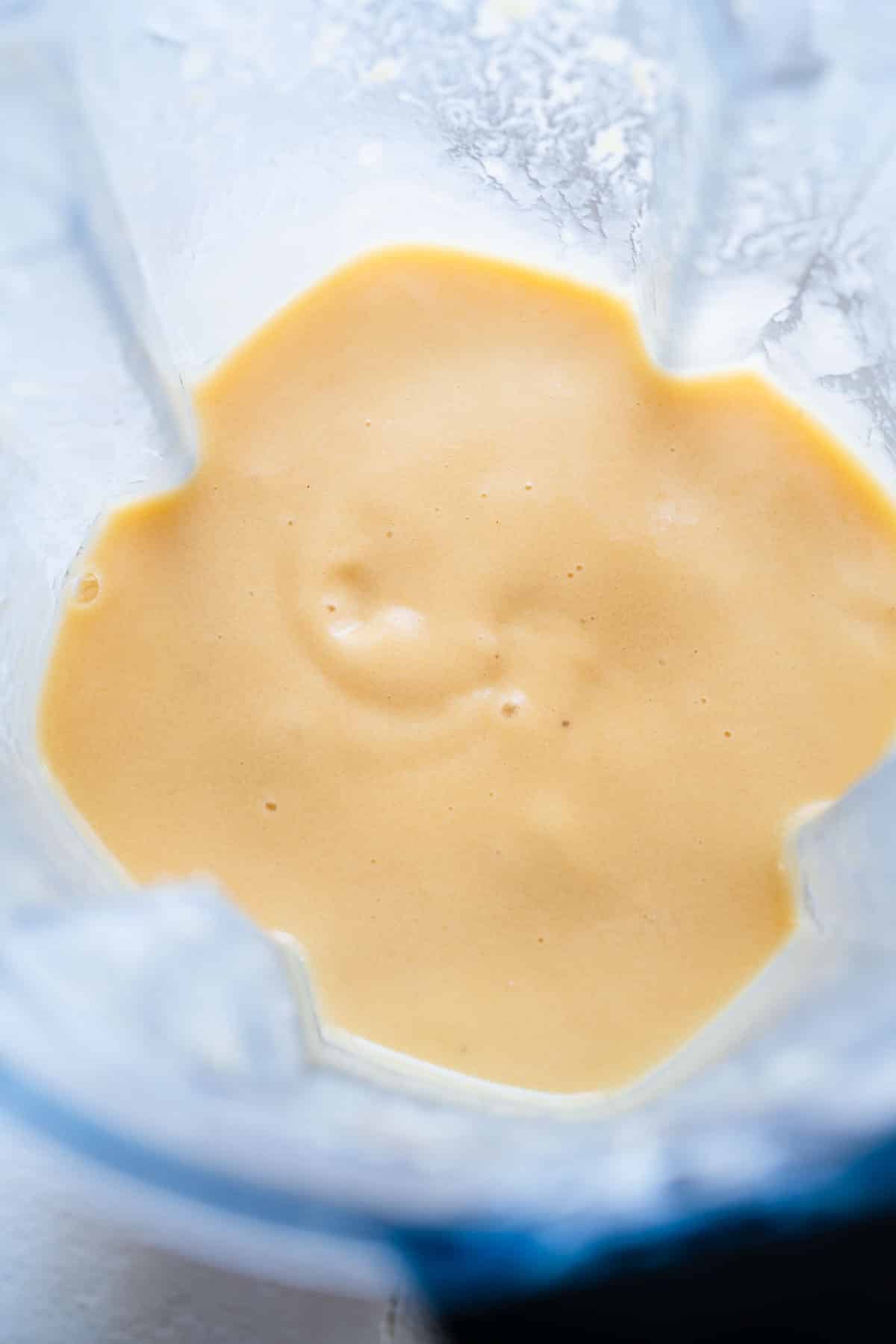
🍓 Add ins & variations
With spinach or kale: This mango spinach smoothie and banana kale smoothie are proof of just how well greens like baby spinach or baby kale go with tropical fruits. Add 1-2 cups before blending for an easy green smoothie.
For a boost of fiber & healthy fats: Add in 1 tablespoon of chia seeds or ground flaxseed, or ¼ of an avocado. You can also use ground psyllium husks but be sure to enjoy it soon after blending (since they gel up quickly in liquid).
With coconut: Swap canned coconut milk for water
With Greek yogurt: For an extra boost of protein (or to use in place of protein powder) add ½ cup of plain unsweetened Greek yogurt.
With coconut water: For an even thicker & more hydrating smoothie, try substituting coconut water in place of plain filtered water.
With milk: To make an even creamier smoothie, substitute regular milk, canned coconut milk or almond milk in place of water.
With berries: Add ½ cup of frozen strawberries, blueberries, cherries, raspberries or a mixed berry blend.
With peaches: Add ½ cup of fresh or frozen peaches.
With oranges or orange juice: Substitute orange juice in place of water, or simply add some fresh orange slices to the blender.
With ginger: I love adding ginger to smoothies - it’s warming and it pairs really well with both mango and pineapple. You can either grate some fresh ginger into the blender cup or if you have a high-powered blender just drop a small chunk of it in (peel and all!).
Without banana: If you want to make this recipe with no banana, you can double up on the mango, add more ice, or try using frozen riced cauliflower instead (it doesn’t add any flavor and is a great low sugar banana substitute in smoothies).
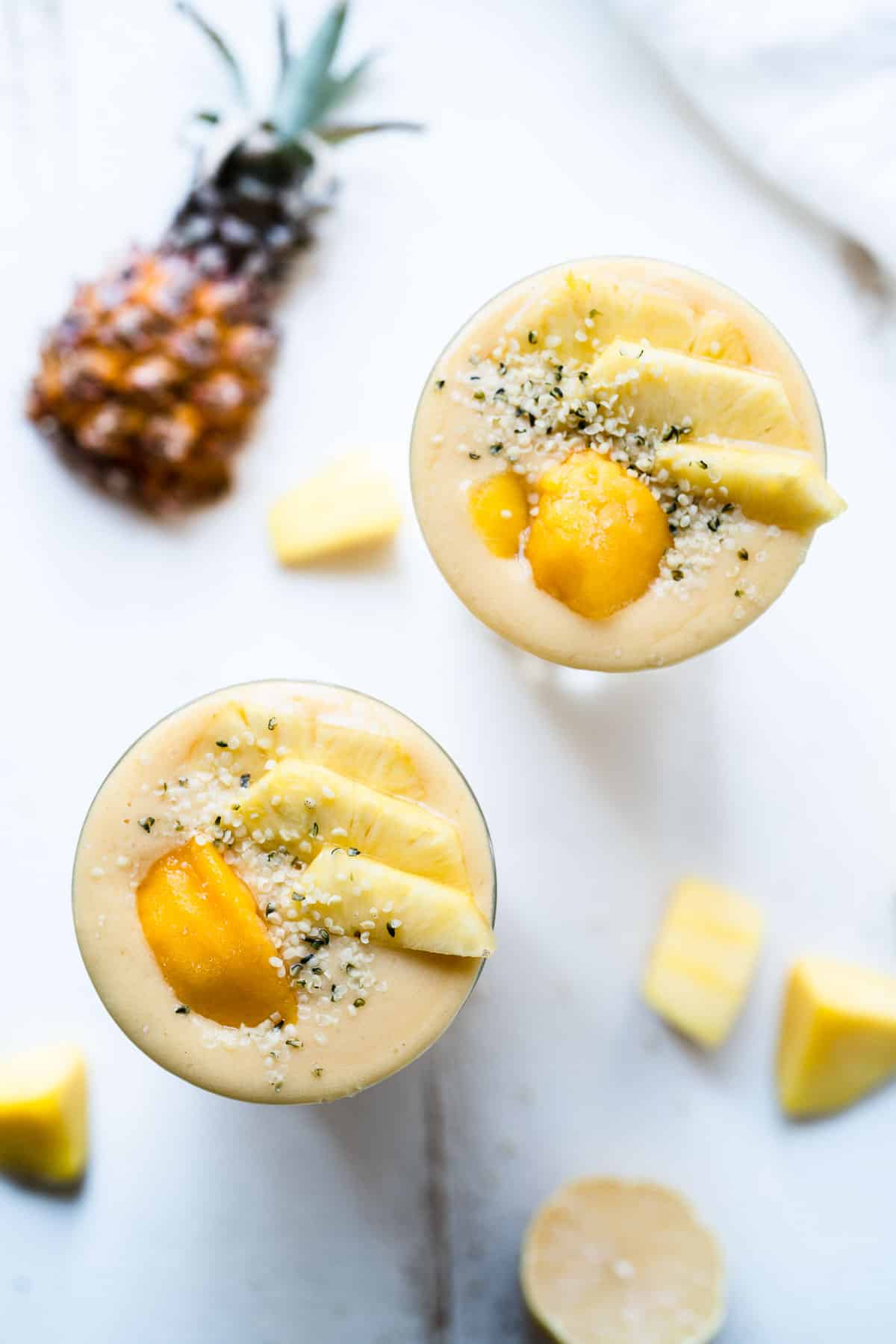
🍨 How to make a smoothie bowl
You can turn almost any smoothie recipe into a thick and delicious smoothie bowl just by reducing the amount of liquid you’re using.
To make a mango pineapple smoothie bowl, reduce the amount of water down to ¾ cup and be sure to use frozen mango, frozen pineapple and frozen banana.
You can use any toppings you like, but here’s a few that go really well with this smoothie:
- For texture and crunch: coconut flakes, granola, sliced almonds, chia seeds, hemp seeds, bee pollen
- For fresh fruit: pineapple, banana, mango, kiwi, passionfruit, strawberries, blueberries
- Fun extras: honey, coconut butter, almond butter, peanut butter, coconut cream
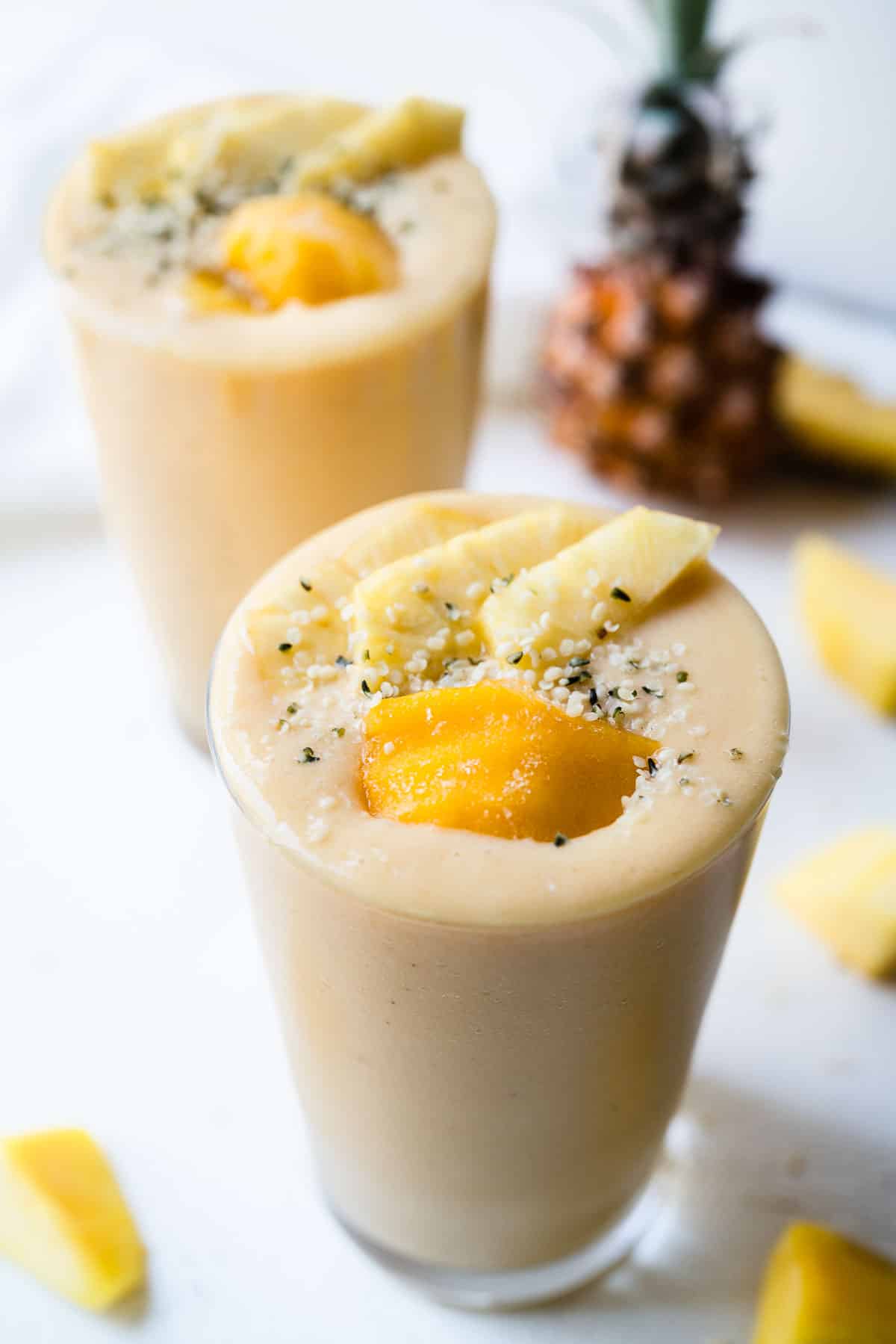
💬 Answering your smoothie FAQ’s
What fruits go well with mango and pineapple?
- Since mango and pineapple both have a delicious sweet-tart taste, they blend well with many different fruits (especially tropical fruits and berries). Easy pairings include banana, coconut, orange, passionfruit, kiwi, pear, strawberry, blueberry, raspberry and more.
Is pineapple and mango good for you?
- Both of these fruits are packed with fiber and vitamin C, so they can be great for digestive, immune and skin health. I love adding whole fruits like these to smoothies, because they can help me feel fuller for longer than juice would alone.
Is McDonald's Mango Pineapple Smoothie real fruit?
- According to their website ingredient list (under the “allergen information” dropdown), McDonald’s mango pineapple smoothie is made with fruit juice and fruit puree concentrates. They also list: Cellulose Powder, Natural And Artificial Flavors, Xanthan Gum, Pectin, Citric Acid, Fruit And Vegetable Juice For Color, Turmeric Extract, Cultured Grade A Reduced Fat Milk, Sugar, Whey Protein Concentrate, Fructose, Corn Starch, Modified Food Starch, Gelatin, and Active Yogurt Cultures.
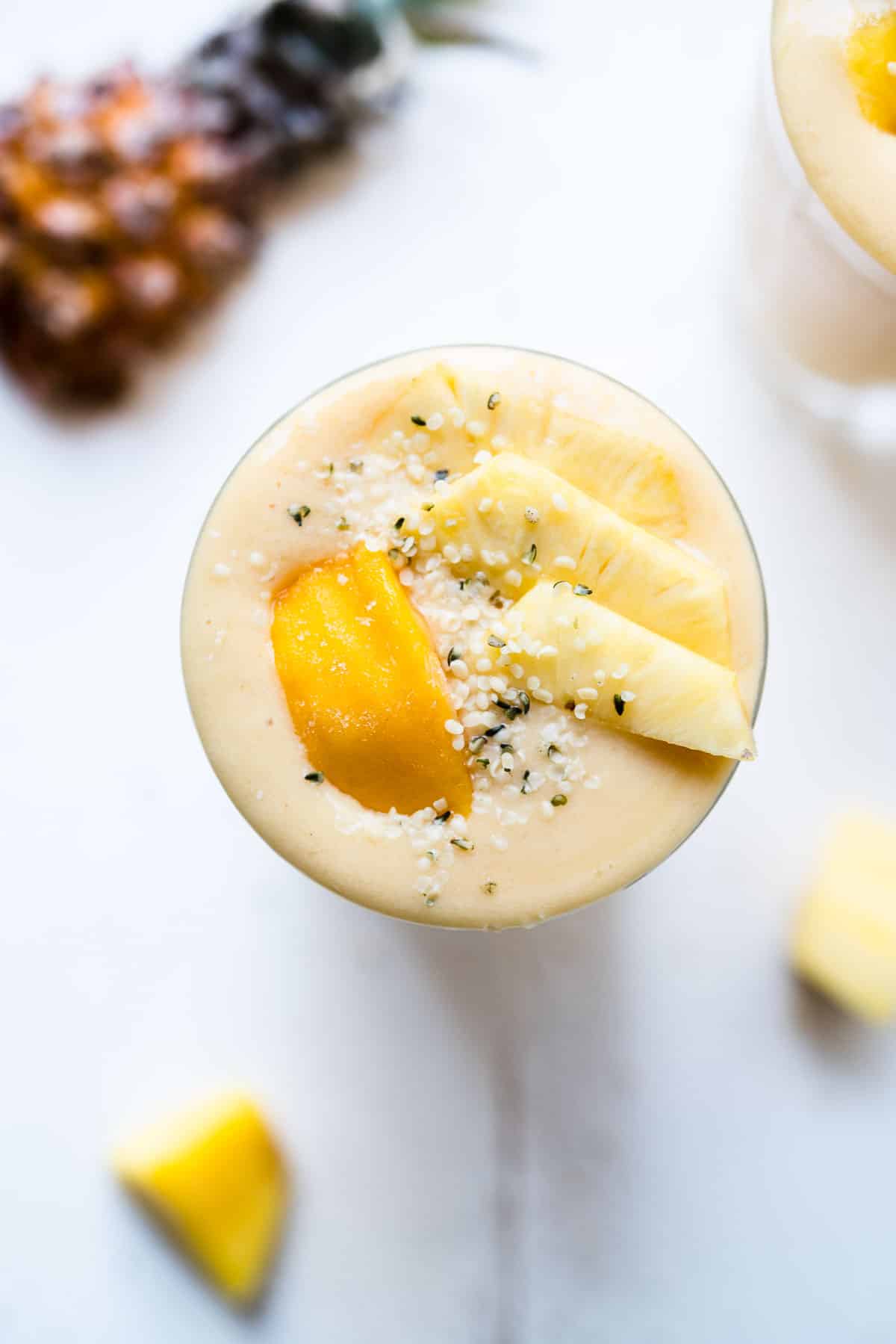
🧊 Storage & freezing tips
Of course, smoothies are at their best when enjoyed right after blending but it is totally possible to store leftovers in the fridge and freezer - here’s a few ways I’ve stored mine.
If you want to enjoy it within the next day or two, you can store it in the fridge in a tightly sealed lidded container.
For the freezer, I recommend either prepping them in advance to make fresh (like with these make ahead smoothie freezer packs) or freeze the already-blended smoothie in ice cube trays. Then store the smoothie cubes in a ziptop bag for up to a month.
Don't worry if there's some separation, you can just reblend them to freshen them up. And add ice, chia seeds or more frozen fruit to thicken as needed.
🥛 More easy smoothie recipes
Mango Spinach Smoothie (with Protein!)
Chocolate Banana Smoothie (with Protein!)
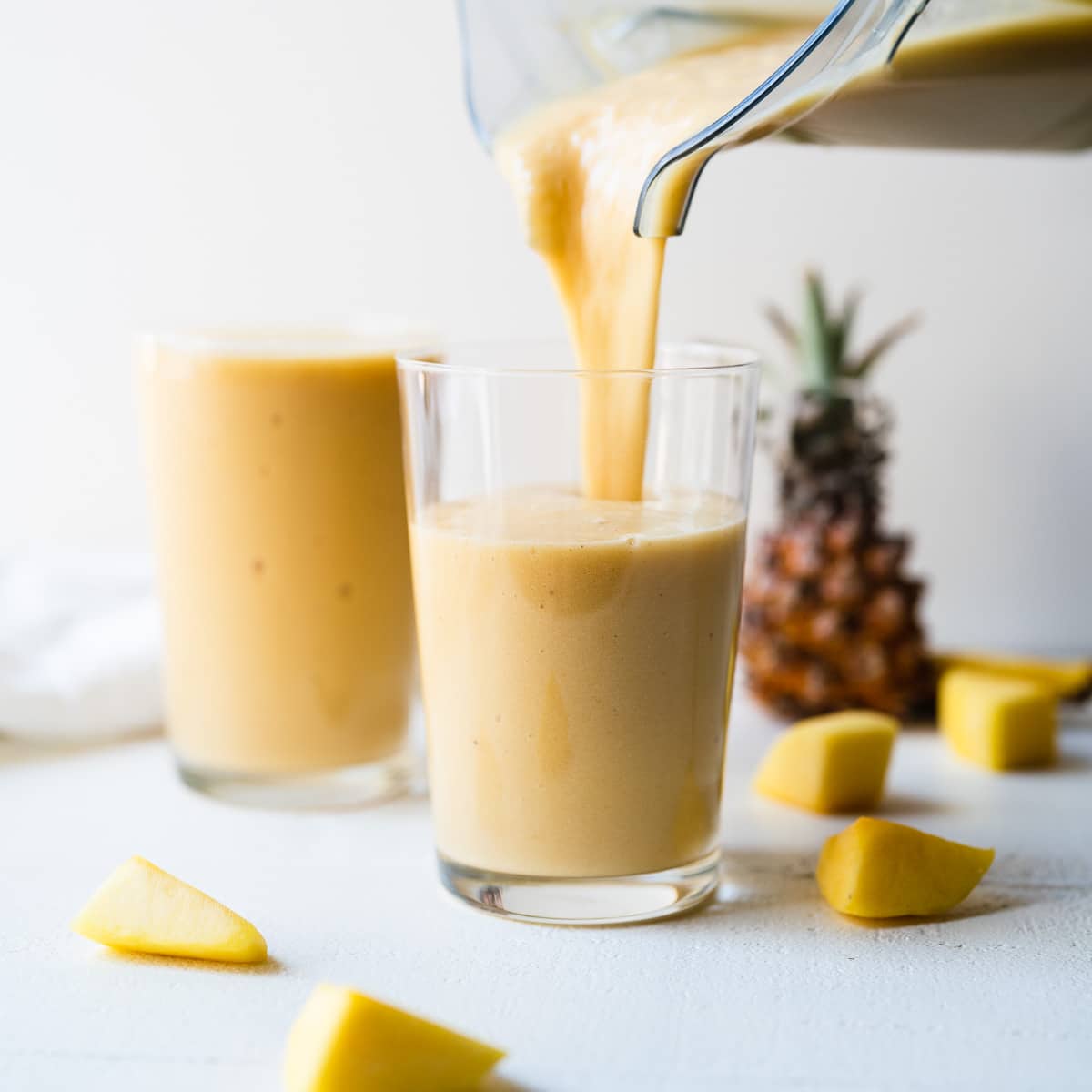
Mango Pineapple Smoothie (Easy and Healthy!)
Equipment
Ingredients
- ¾ cup mango chunks fresh or frozen
- ½ cup pineapple chunks fresh or frozen
- ½ cup banana fresh or frozen
- 1 cup water or coconut water, pineapple juice, or milk of choice
- 1 tablespoon lemon juice or juice of about ½ a lemon
- 1-2 scoops vanilla protein powder
Instructions
- Add all of your ingredients to a blender.
- Cover and blend until smooth. Sweeten to taste with honey if you like.
Video
Notes
For a sweeter smoothie: 1 tablespoon honey or maple syrup
For a healthy fat & fiber boost: 1 tablespoon chia seeds or ground flax seed
For a green smoothie: 1-2 cups of baby spinach or baby kale Nutrition information was calculated using water and 2 scoops of vanilla protein powder (and without the optional add-ins). For a vegan smoothie: This smoothie is already naturally dairy free and gluten free, but be sure to use a plant based protein powder and maple syrup (if using sweetener) for a vegan version. For a paleo smoothie: This smoothie is naturally dairy free and grain free, but be sure to use a paleo friendly protein powder for a paleo compliant version. For a thinner smoothie, add more water. For more ingredient swaps, modifications, variations and storage tips (like how to turn this into a smoothie bowl!) - see the full blog post above.

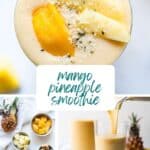
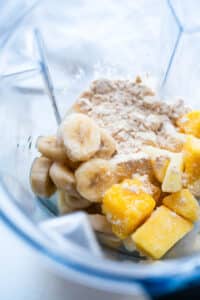
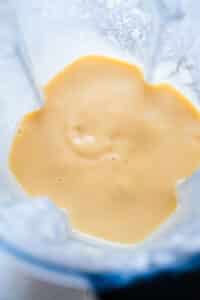
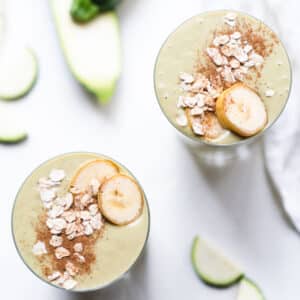
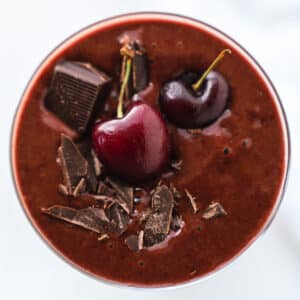
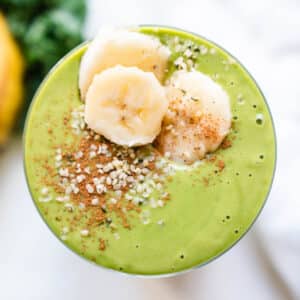
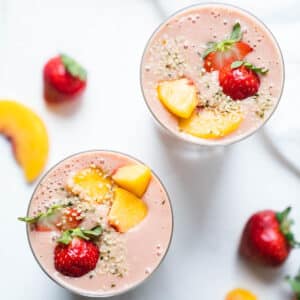
Leave a comment, question, or rate this recipe